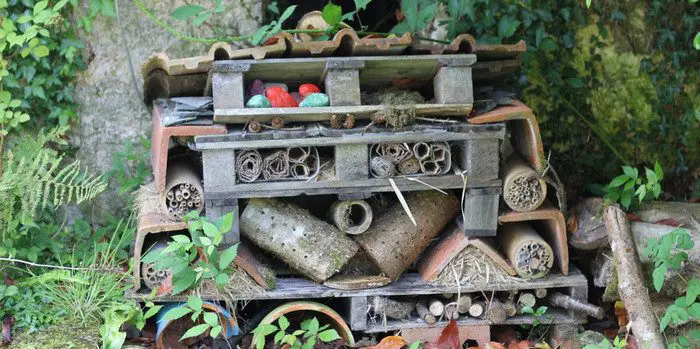
Can you imagine breakfast without coffee or life without chocolate? No apples or pears, citrus, watermelon, tomatoes or berries? No grapes for the table or your wine? You may have to because nature’s pollinators are under significant threat of extinction.
When most of us think of bees, we think of the honey bee shown above. But the honey bee is just one of more than 20,000 types of bees. Each of those types favours a specific environment and group of plants. And most of those bee types are in decline! That decline could threaten up to three-quarters of all food production.
To get a visual understanding of what the bees mean to our survival, watch this video:
There are also other pollinators like butterflies, flies, moths, wasps, beetles, birds, and bats. Many of these are also under threat.
So what’s causing the decline in bee populations all over the world? Human activities such as changes in land use, intensive agricultural use and the extensive use of herbicides and pesticides. Climate change, diseases and pests are also contributing factors to their marked decline.
Many farmers have been using commercially bred bees to make up the natural shortfall. But even commercially bred bees have been disappearing since 2006! Around one third have simply abandoned their hives and never returned. Their disappearance has previously been thought to be attributed to viruses. However, recent studies show that it may have been triggered by the use of pesticides, specifically neonicotinoids.
Initially, neonicotinoids were thought to be safe for bees since they do not actively kill them. But now a more intensive study into the effects of the chemical shows that it may be messing with the bees’ central nervous systems causing them to unwittingly bring contaminated pollen back to their hives spreading the condition to other bees. The end result is the destruction of the colony.
If this continues on a global scale, it won’t be just food that will be affected, but our clothes as well. Cotton accounts for about 35% of the fiber used for clothing and it’s a crop that relies almost totally on pollinators. Take 35% of fabric out of the equation and that leaves a very big hole in your wardrobe, your bedding and your towels!
The good news is that at least a part of what is causing the problem can form part of the solution. There are still a lot of missing pieces in the puzzle, but experts say that there are enough studies to point them in the right direction. First among the options is to maintain a greater diversity of pollinator habitats. This can best be done by employing traditional practices such as crop rotation, decreasing use of pesticides, changes in the commercial pollination process and public education and awareness.
We owe those busy bees a lot and we should take care of their habitats if we are to continue enjoying an abundance of foods that are heavily dependent on pollinators. Without them, it won’t be just be chocolates and coffee that will disappear, there might not be anyone left to enjoy them. They are literally our lifeline too.
What can you do to help?
Build an insect house of course! While the honey bee and close relatives tend to swarm, many pollinators are solitary or live in small communities. Insect houses are easy and fun to build and are great family projects. You can scale the insect house to match your yard, from small to substantial.

Remember that most insects are beneficial to our existence. And yes, you’ll get some spiders along with the insects but the wasps and birds will keep them under control. It’s strange how nature always balances if we keep out of the way!
Sadly, I haven’t seen a honey bee in my yard for a very long time. When was the last time you saw one?



